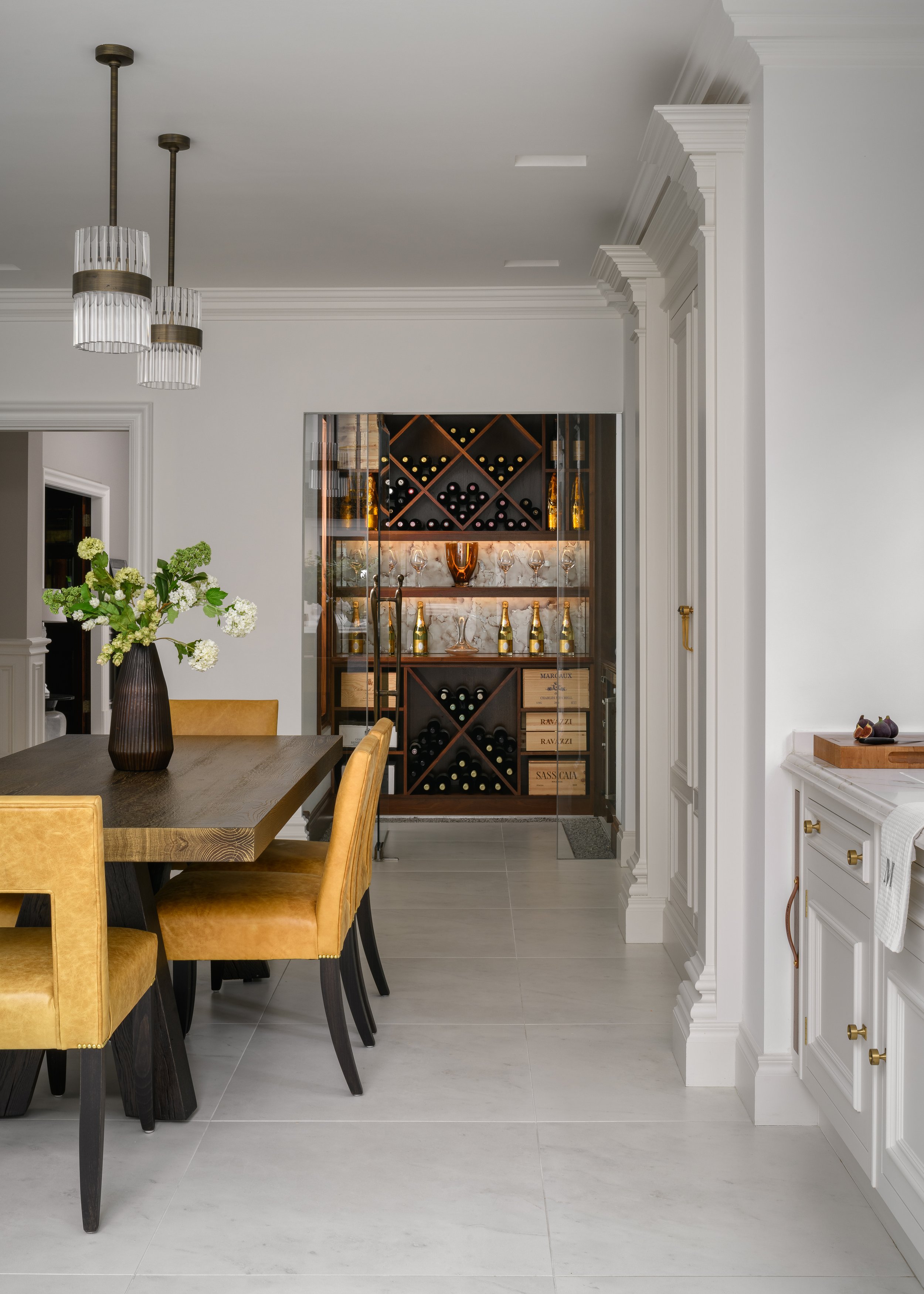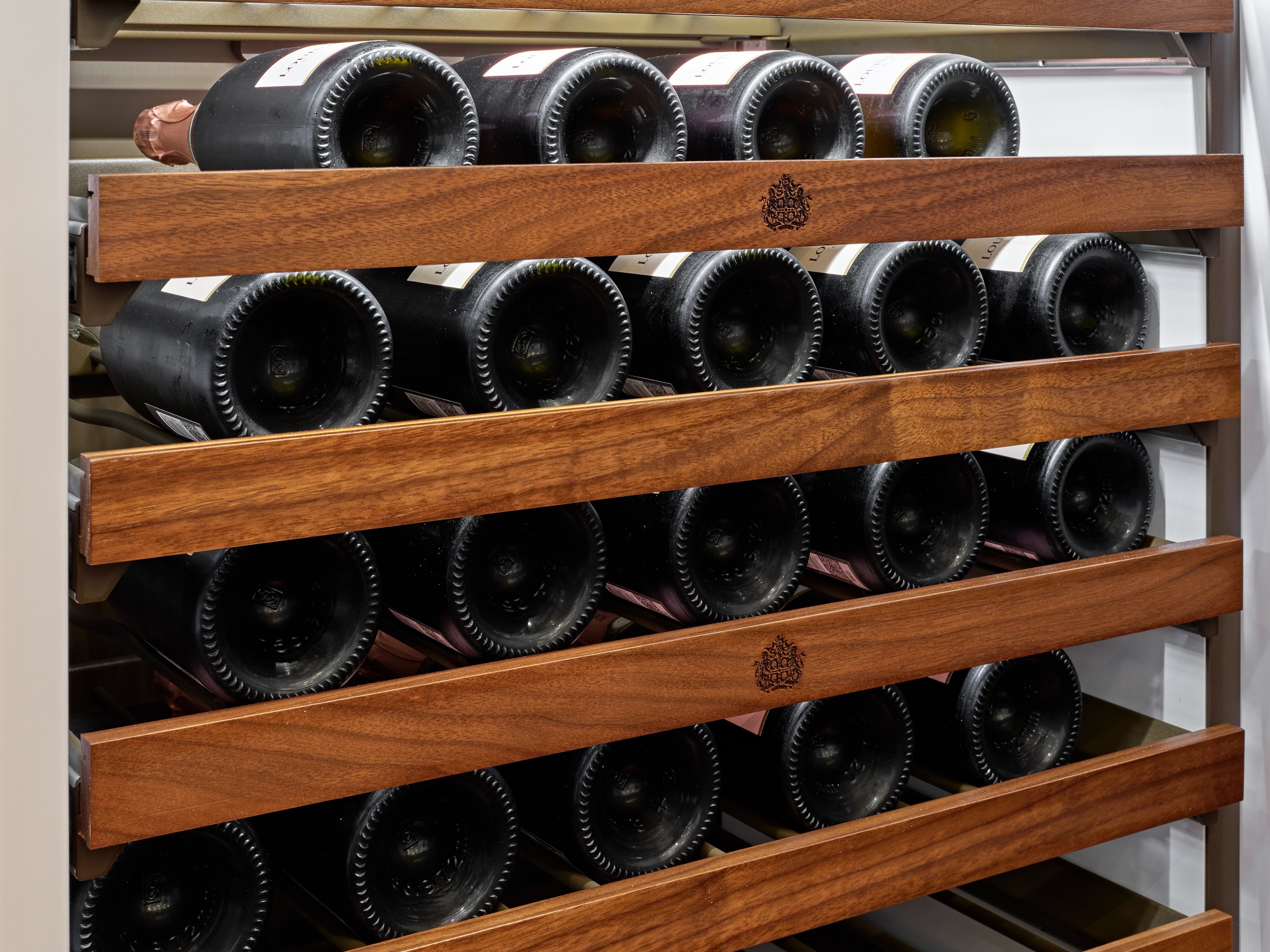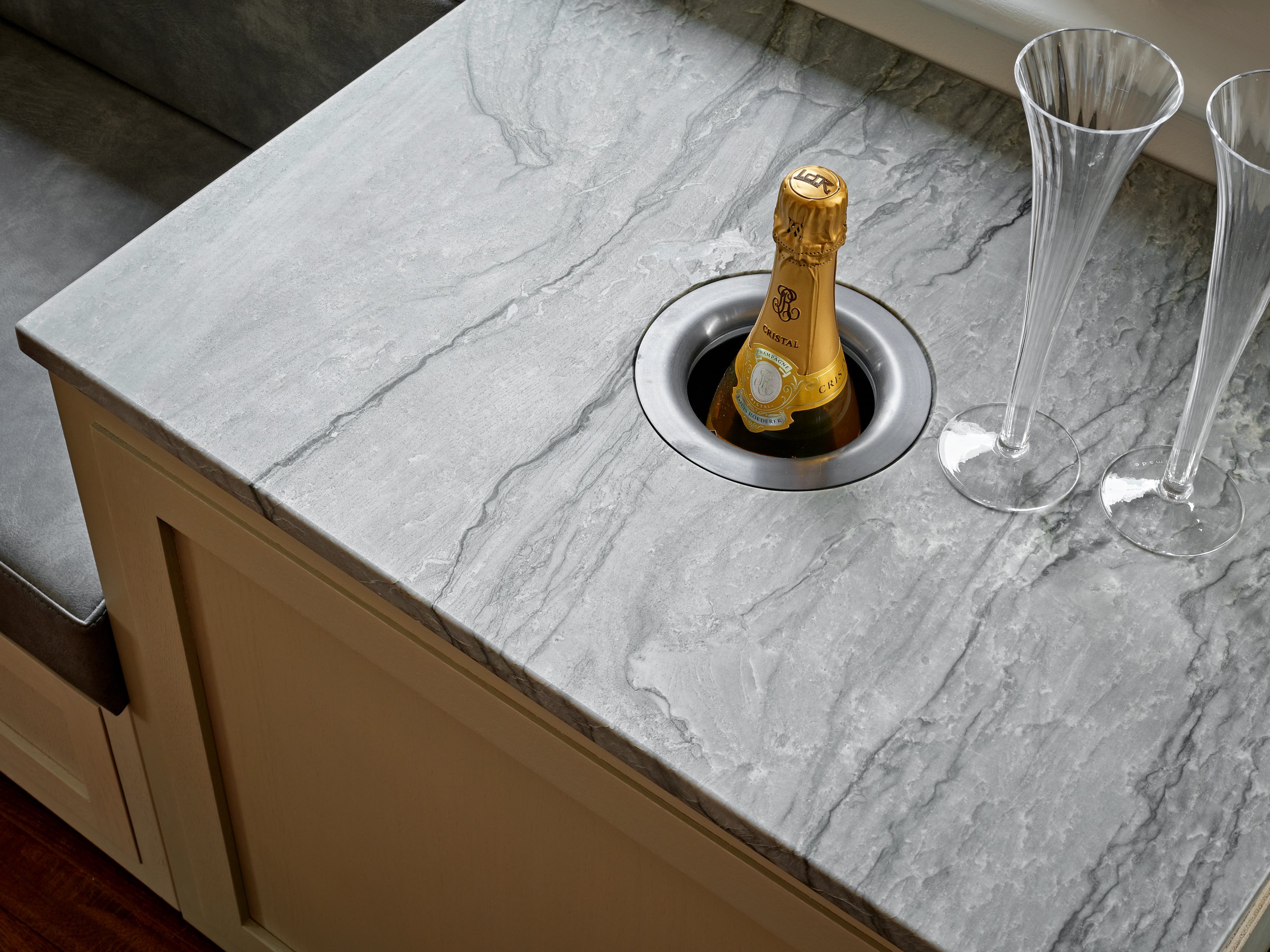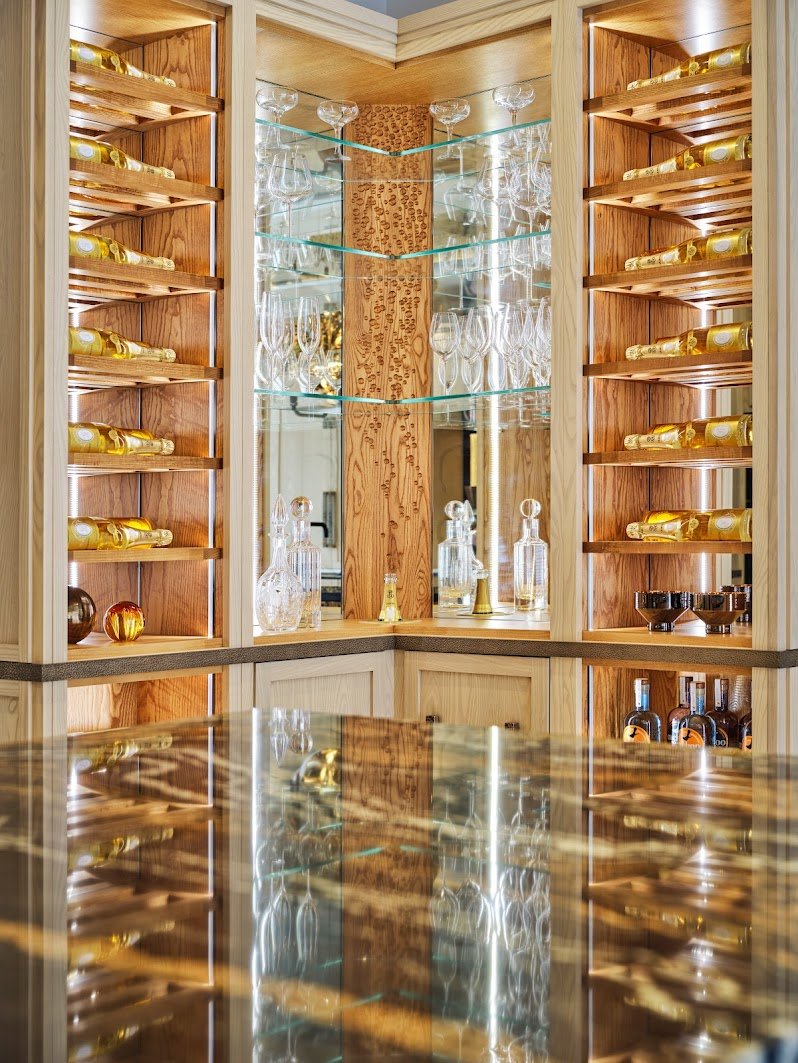The Secrets of Wine Storage
Wine storage integrated into Clive Christian’s Opus kitchen.
The wine market is booming: last year, Sotheby’s wine and spirits department realised a record $150 million in global sales. Collectors are getting younger, too, with under 40s accounting for almost a third of those sales.
In line with this burgeoning interest, there’s been a surge in demand for custom-built storage solutions to house lovingly sourced vintages in controlled conditions. As beautiful as they are practical, bespoke wine rooms and cellars are now being shown off in kitchens and dining spaces as opposed to hidden below ground.
Clive Christian’s Head of Design Oliver Deadman explains: “Where previously these spaces existed in subterranean rooms, our wine displays have evolved into points of decoration, allocated to house clients’ personal favourites, in the same way they may house a fine art collection. These spaces are positioned in key entertaining zones, maximising conversation and allowing hosts to guide guests through their exquisite taste.”
But what are the key factors to consider when designing a wine room? And how can you build your own collection? As global leaders in luxury interiors, including bespoke wine rooms and cellars, Clive Christian works with experts in the field. We spoke to Fiona Love of luxury wine storage brand Spiral Cellars and Alexandra Tilling at wine importer MMD.
“Where previously these spaces existed in subterranean rooms, our wine displays have evolved into points of decoration, allocated to house clients’ personal favourites, in the same way they may house a fine art collection.”
Oliver Deadman, Head of Design
The science of storage
“Wine likes to be kept in a cool, dark, humid and vibration-free environment,” says Love. “An average wine, when left to develop in such conditions, will evolve into something much more complex, characterful and interesting due to a series of chemical reactions that occur over time, altering its appearance, taste and aroma.”
These conditions can be tricky to replicate at home, due to fluctuations in temperature and light. A dedicated wine room or cellar maintains a constant temperature (anywhere between 8 and 18° is ideal), as well as high humidity and low lighting.
All about angles
Wine should be stored horizontally or at a 45° angle with the cork pointing downwards so that the liquid stays in constant contact with it. Love explains, “If a bottle is stored vertically, the cork can dry out and shrink. Air can enter the bottle and potentially oxidise the wine, negatively impacting the taste and aroma.”
In order to facilitate these ideal conditions, Clive Christian’s bespoke cabinetry includes tilting shelves that allow bottles to be stored either horizontally or at an angle. This also makes them easier to access and allows collectors to display labels and foils, much as they would works of art.
Material matters
Wine rooms and cellars can vary widely in composition, from traditional oiled oak shelving to stainless steel wine walls. Clive Christian integrates stone worktops, wall mounts and floors for their natural climate controlling properties as well as their aesthetic appeal. A palette of carefully selected hardwood is available to lend structure, colour and warmth to the curation.
We also work with Spiral Cellars whose signature in-floor wine cellar uses cool-to-touch limestone concrete to keep its contents within the optimal temperature range.
The personal touch
Discerning collectors can add custom details to any wine room to reflect their individual taste and requirements. Deadman mentions one particularly stimulating brief: “An aerating trough was installed within the floor, filled with limestone chippings. The proprietor poured the wine into the dedicated zone so that the aromas filled the air while they enjoyed a glass.”
Love also recommends thinking about how the space might evolve as your collection grows: “Do you need space for case storage, or larger, unusual-shaped bottles or even spirits? Will the room require stemware storage space, a pouring table or a sink?”
Starting a collection
So that’s the storage sorted – what about the contents? Alexandra Tilling of MMD says that new collectors should think about whether they intend to use their collection primarily for consumption or as an investment: “Historically the idea would be to buy a couple of cases, one to lay down and age with a view to consuming and the other with a view to selling. The one you sell would ideally then cover the cost of the one you keep.”
Tilling recommends buying wine en primeur, or before it’s been bottled, when it is usually at its cheapest. It’s also worth taking advice from a wine merchant: “They can help you build your collection, ensuring you receive en primeur offers, and can help with the brokering of your wines.”
What to buy now
When it comes to curating your collection, it’s all about variety, says Tilling: “I would recommend a selection of wines to invest and to consume, and a blend of earlier maturing wines, or ones you enjoy drinking.”
Mixing up regions also allows you to stagger the drinking windows: “It is definitely worth exploring the up-and-coming regions that are producing some really exciting wines, such as South Africa, Bierzo and Ribera Sacra in Spain, Greece, premium Chile) – alongside the wines that require a bit more age (the more tannic wines).”
When to drink it
Tilling recommends downloading an app to keep abreast of wines entering their drinking window. To be on the safe side, use a coravin – this lets you sample wine without uncorking it to make sure it’s ready: “If you feel it is not at the state of maturity you would like, you can leave it in the cellar for another year or so.”
With a bespoke, climate-controlled wine room from Clive Christian, you can be confident it will only improve with age. Cheers!









